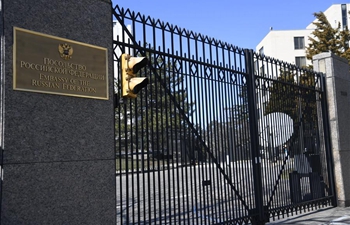LOS ANGELES, March 27 (Xinhua) -- The U.S. National Aeronautics and Space Administration (NASA) has delayed the launch of the James Webb Space Telescope until no earlier than May 2020 due to the need for more time to "ensure a successful mission," the space agency announced on Wednesday.
After an independent assessment of remaining tasks for the NASA's next highly complex space observatory, Webb's previously revised 2019 launch window is now targeted for approximately May 2020, nearly a year later than planned.
"Webb is the highest priority project for the agency's Science Mission Directorate, and the largest international space science project in U.S. history," NASA Acting Administrator Robert Lightfoot said in a statement.
"All the observatory's flight hardware is now complete, however, the issues brought to light with the spacecraft element are prompting us to take the necessary steps to refocus our efforts on the completion of this ambitious and complex observatory."
NASA said it will work with its partner the European Space Agency (ESA) on a new launch readiness date for the Ariane 5 rocket that will launch Webb into space.
Because of the launch delay, the telescope's 8.7 billion U.S. dollars price tag could rise. Once a new launch readiness date is determined, NASA said it will provide a cost estimate that may exceed the projected development cost to complete the final phase of testing and prepare for launch.
Additional steps to address project challenges include increasing NASA engineering oversight, personnel changes, and new management reporting structures.
Webb was considered the successor to NASA's 26-year-old Hubble Space Telescope. According to NASA, the space telescope will be the world's premier infrared space observatory and the biggest astronomical space science telescope ever built.
Once launched, it will complement the scientific discoveries of NASA's Hubble Space Telescope and other science missions. It may solve mysteries of our solar system, look beyond to distant worlds around other stars, and probe the mysterious structures and origins of the universe and the Earth's place in it, said NASA.












